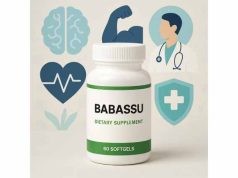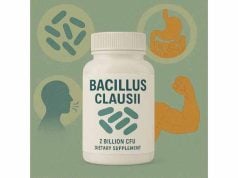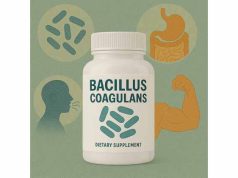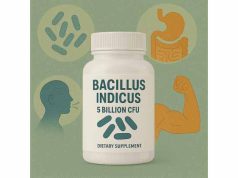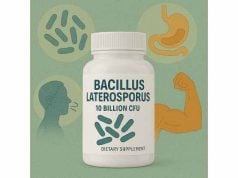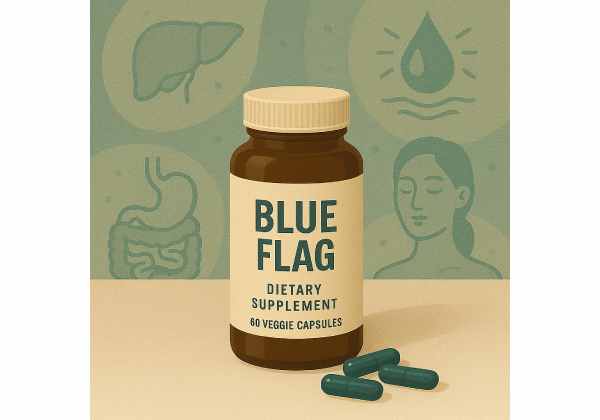
Blue flag (Iris versicolor) is a striking wildflower native to North America, prized for its vibrant blue-purple blooms and its long-standing role in traditional herbal medicine. Often found near marshes and streams, blue flag’s rhizome (rootstock) has been used by Indigenous healers and herbalists for centuries as a natural remedy for liver and lymphatic support, mild detoxification, and skin health. Modern herbal enthusiasts turn to blue flag for its gentle cleansing actions and as a unique addition to holistic wellness routines. In this comprehensive guide, we’ll explore blue flag’s properties, benefits, how it works in the body, evidence-based uses, dosage guidelines, and safety considerations—empowering you to make informed, confident decisions about this fascinating botanical.
Key Takeaways
- Blue flag is traditionally valued for supporting liver, lymphatic, and digestive health.
- Used as a gentle detoxifier and skin remedy, especially for sluggish digestion or minor skin eruptions.
- Contains unique iridoid glycosides and resinous compounds that drive its cleansing and mild laxative actions.
- Must be used with caution: Overuse or improper preparation can cause digestive upset or toxicity.
- Always consult a qualified herbalist or healthcare provider before using blue flag, especially if pregnant, breastfeeding, or on medications.
Table of Contents
- Blue Flag Botanical Profile: History and Traditional Applications
- Biologically Active Constituents and Mechanisms of Blue Flag
- Blue Flag Evidence-Based Health Benefits and Modern Uses
- Comprehensive Safety Guide: Blue Flag Side Effects, Toxicity, and Interactions
- Blue Flag Dosage, Best Usage Practices, and Administration
- Frequently Asked Questions About Blue Flag
Blue Flag Botanical Profile: History and Traditional Applications
Blue flag (Iris versicolor), also known as harlequin blueflag, wild iris, or poison flag, is a perennial plant found throughout eastern North America. Its sword-shaped leaves and striking, violet-blue flowers make it a favorite among gardeners and foragers alike, but its medicinal history runs deep.
Native American and Traditional Uses
Indigenous peoples—including the Cherokee, Iroquois, and Delaware—used blue flag’s rhizome in small, carefully prepared doses:
- Liver and bile support: Blue flag tea was a traditional remedy for “liverish” complaints, sluggish digestion, and jaundice.
- Lymphatic and skin health: Used as a blood purifier, blue flag was thought to clear toxins, helping with skin eruptions like acne, eczema, or boils.
- Digestive stimulant: In tiny doses, the rootstock was given to gently move the bowels and support regular elimination.
- Topical applications: Poultices from the mashed root were used for minor sores, bruises, or to draw out infection.
Introduction to Western Herbalism
European settlers adopted blue flag into early American herbal texts as a “detox” and liver remedy, integrating it into formulas for:
- Spring cleanses: Helping the body transition seasons and expel accumulated waste.
- Fluid retention: Sometimes used to address mild swelling, edema, or puffiness associated with poor lymphatic flow.
- Constitutional support: Blue flag became a staple in traditional “alterative” (cleansing and balancing) herbal blends.
Modern Supplement Forms
Today, blue flag is most often found as:
- Tinctures: Alcohol extracts of the dried root, allowing for careful dosing.
- Dried root powders: Occasionally used in small capsules or as tea, though this requires extra caution due to potency.
- Homeopathic preparations: Extremely diluted blue flag (Iris versicolor) is used for specific symptom patterns in classical homeopathy.
Who Uses Blue Flag?
- Herbalists supporting clients with sluggish liver, poor lymphatic function, or chronic skin eruptions.
- Individuals seeking gentle “detox” during seasonal transitions or after dietary excess.
- Wellness enthusiasts interested in unique, North American herbal traditions.
Important Cautions in Traditional Practice
- Only the dried root is used; fresh root is significantly more toxic.
- Dosing is always low and closely monitored—blue flag is not a culinary or “everyday” herb.
- Combinations with gentler detoxifying herbs (burdock, red clover) are common to soften its effects.
Blue flag’s legacy as a cleansing, balancing, and supportive herb lives on—but its respect for proper use is just as important today as it was centuries ago.
Biologically Active Constituents and Mechanisms of Blue Flag
Blue flag’s actions stem from a complex phytochemical profile unique to the Iris genus. The rhizome contains several potent compounds that account for both its medicinal power and its safety considerations.
Key Active Compounds in Blue Flag
- Iridoid glycosides (notably iridin): The primary medicinal agents, responsible for stimulating bile flow, aiding liver function, and promoting gentle elimination.
- Resins and volatile oils: These contribute to mild laxative and irritant effects at higher doses, as well as the characteristic scent of blue flag root.
- Tannins and saponins: Offer mild astringent and cleansing actions that help support skin and mucous membrane health.
- Flavonoids and organic acids: Provide antioxidant protection and gentle support to the body’s detoxification pathways.
- Alkaloids: Present in very small quantities; may have stimulating or potentially toxic actions if used improperly.
How Blue Flag Works in the Body
- Liver and gallbladder stimulation: Blue flag’s iridin and related glycosides encourage the liver to produce and secrete more bile, helping to emulsify fats, improve digestion, and support elimination of metabolic wastes.
- Lymphatic cleansing: By gently stimulating the lymph system, blue flag is believed to help move fluid and remove waste products from tissues, reducing puffiness and supporting skin clarity.
- Mild laxative effect: The resins and saponins can gently encourage bowel movements, aiding in the removal of toxins via the digestive tract.
- Skin and glandular support: Topical and internal use (in safe, small doses) have been associated with clearer skin and resolution of minor eruptions.
Traditional Concepts: The “Alterative”
In traditional herbalism, blue flag is classified as an “alterative”—an herb that helps the body gradually restore balance, especially where sluggish metabolism, congestion, or “impure blood” are suspected. While these concepts are less common in modern medicine, the physiological actions of blue flag on liver, lymph, and digestion provide a scientific foundation for these historical uses.
Preparation and Bioavailability
- Drying the root: Reduces the concentration of volatile irritants, making it safer for use.
- Tincture extraction: Alcohol effectively draws out iridoid glycosides and resins for accurate, reproducible dosing.
- Synergy with other herbs: Blue flag is rarely used alone; it’s most effective (and safest) in combination formulas with burdock, dandelion, or red clover.
Cautions on Potency
- Fresh root is much more toxic—only use well-dried, prepared forms from reputable sources.
- High doses, especially of home-processed blue flag, can result in severe nausea, vomiting, or other toxic effects.
Summary Table: Blue Flag’s Main Constituents and Actions
| Compound Type | Main Actions | Notes |
|---|---|---|
| Iridoid glycosides | Liver, bile, lymphatic stimulation | Chief medicinal component |
| Resins | Mild laxative, irritant in excess | Use only as directed |
| Tannins | Astringent, supports skin | For topical/internal balance |
| Saponins | Cleansing, fluid balance | Gentle at low dose |
| Flavonoids | Antioxidant, tissue protection | Supports detox, skin, immunity |
A respect for blue flag’s chemistry is essential—used wisely, it offers valuable wellness benefits rooted in both tradition and modern phytotherapy.
Blue Flag Evidence-Based Health Benefits and Modern Uses
Blue flag’s reputation as a “cleansing” herb is the result of generations of use, now complemented by a growing understanding of its phytochemistry and physiological effects. While scientific studies are limited, both folk tradition and modern herbalists recognize blue flag as a gentle, targeted aid for liver and lymphatic wellness, skin health, and occasional mild detoxification.
1. Liver Support and Gentle Detoxification
- Traditional use: Blue flag root was brewed into teas or tinctures to relieve symptoms of sluggish digestion, bloating, jaundice, and to “purify the blood.”
- Modern understanding: By increasing bile flow, blue flag can help the liver process fats and toxins more efficiently, which in turn supports regular elimination and clearer skin.
- Who benefits: Those with slow digestion, puffy tissues, or mild skin issues linked to liver function.
2. Lymphatic System Activation
- Fluid movement: Blue flag’s stimulation of the lymphatic system may reduce mild swelling or congestion, assisting the body’s natural waste removal.
- Practical application: Often included in herbal protocols for people with recurring skin eruptions or a tendency toward puffiness and sluggishness.
3. Skin Health and Eruptions
- Internal and topical support: Safe, low-dose internal use may help clear minor acne, eczema, or boils associated with slow detox or lymphatic stagnation. Poultices were used for external irritations in traditional medicine.
- Mechanism: Tannins, saponins, and improved waste removal all contribute to blue flag’s reputation as a “skin purifier.”
4. Digestive Motility and Elimination
- Mild laxative effect: Small amounts can gently stimulate the bowels and support regularity without harsh purgative action.
- Who should use caution: People with sensitive digestion, chronic diarrhea, or inflammatory bowel conditions should avoid blue flag.
5. Synergistic Use in Herbal Formulas
- Alterative blends: Blue flag is rarely the main ingredient; it is combined with milder alteratives (burdock, red clover, yellow dock) for a well-rounded, safe cleansing effect.
- Seasonal wellness: Many herbalists recommend blue flag in small doses during spring or fall “detox” periods.
Limitations and Emerging Research
- There are few modern clinical studies on blue flag. Most knowledge is derived from traditional uses, case studies, and laboratory analysis of its phytochemicals.
- Animal and in vitro research suggest liver-protective and anti-inflammatory actions, but more human studies are needed.
Who Should Consider Blue Flag?
- Adults seeking mild, natural support for liver, lymph, or skin health.
- Those looking for a gentle addition to a holistic “detox” or wellness protocol.
- Individuals working with a qualified herbalist for specific cleansing or metabolic goals.
Summary Table: Blue Flag’s Evidence-Based Benefits and Ideal Use Cases
| Health Benefit | Evidence Base | Ideal User |
|---|---|---|
| Liver and bile support | Traditional, early science | Adults with sluggish digestion |
| Lymphatic cleansing | Traditional, folk | Mild edema, recurring skin eruptions |
| Skin clarity | Folk, anecdotal | Acne, eczema, boils |
| Digestive motility | Folk | Occasional mild constipation |
| Seasonal detox | Folk, synergy | Spring/fall wellness seekers |
Blue flag’s gentle yet targeted action makes it a useful, though specialist, botanical—always to be used with knowledge and care.
Comprehensive Safety Guide: Blue Flag Side Effects, Toxicity, and Interactions
Blue flag (Iris versicolor) is a powerful herbal remedy with a narrow margin between helpful and harmful use. Proper respect for dosing, preparation, and individual health status is essential for safe supplementation. This section outlines everything you need to know about potential side effects, toxicity, and interactions to ensure responsible, informed use.
General Safety Overview
- Low-dose traditional use: When properly prepared and dosed, blue flag is safe for most healthy adults under professional supervision.
- Fresh vs. dried root: The fresh rhizome is significantly more toxic than the dried; only use professionally prepared, dried blue flag from reputable sources.
- Children and vulnerable populations: Blue flag is not appropriate for children, pregnant or breastfeeding women, or people with liver or gastrointestinal disorders unless directed by a qualified herbalist or physician.
Possible Side Effects
Blue flag is potent and should only be used in recommended, minimal quantities:
- Digestive upset: The most common issue, even at low doses, can include nausea, vomiting, diarrhea, or stomach cramping. If any of these occur, discontinue use immediately.
- Burning sensation or irritation: Ingesting too much or using improperly prepared root may cause burning in the mouth, throat, or stomach.
- Skin rash: Handling fresh plant parts may cause contact dermatitis in sensitive individuals. Always wash hands after handling.
Toxicity and Overdose Risks
- Symptoms of overdose: Severe nausea, persistent vomiting, abdominal pain, diarrhea, dizziness, weakness, or potentially dangerous drops in blood pressure.
- Fresh root hazard: The toxicity is much greater in the fresh plant, which can cause systemic poisoning and should never be consumed raw or unprocessed.
- Emergency action: If significant symptoms of poisoning are suspected after blue flag ingestion, seek emergency medical help or contact poison control immediately.
Drug and Supplement Interactions
- Liver medications: Blue flag may affect liver enzyme activity. If you are taking prescription medications metabolized by the liver (such as statins, some antidepressants, or antifungals), consult your healthcare provider before use.
- Diuretics or laxatives: As blue flag has mild diuretic and laxative properties, using it alongside similar supplements or drugs could cause dehydration or electrolyte imbalance.
- Other detoxifying herbs: Combining blue flag with strong detox herbs (like poke root or cascara sagrada) is not recommended unless under expert supervision, as this can increase risk of digestive side effects.
Who Should Not Use Blue Flag?
- Pregnant or breastfeeding women: Blue flag can stimulate the uterus and poses a risk to pregnancy.
- Young children and infants: Not safe; avoid all internal use.
- People with chronic liver or kidney conditions: The stimulating and detoxifying effects may worsen underlying disease or interact with medications.
- Those with sensitive digestive tracts: Anyone prone to IBS, chronic diarrhea, or stomach ulcers should avoid blue flag.
Quality and Sourcing for Safety
- Professional products only: Always choose blue flag supplements, tinctures, or teas made by reputable herbal brands with clear labeling and third-party testing.
- Never wild-harvest for internal use: Accurate identification and proper preparation are critical to avoid accidental poisoning.
What to Do in Case of Side Effects or Overdose
- Mild digestive upset: Discontinue use, hydrate, and monitor for 24 hours.
- Severe symptoms: Vomiting that will not stop, severe diarrhea, fainting, or confusion—seek emergency medical attention immediately.
- Allergic skin reaction: Wash area with soap and water; seek care if rash is severe or persistent.
Summary Table: Blue Flag Safety and Interaction Concerns
| Safety Issue | Risk Level | Who’s Most Affected | Precautions |
|---|---|---|---|
| Fresh root ingestion | High toxicity | Everyone | Only use dried, prepared root |
| Overdose | Severe | Adults, especially self-treating | Never exceed recommended dose |
| Pregnancy/breastfeeding | Contraindicated | Women who are or may become pregnant | Avoid completely |
| Drug interactions | Moderate | Those on liver-metabolized meds | Consult healthcare provider |
| Children | Not safe | Anyone under 18 | Do not use |
When used with wisdom and respect, blue flag can be a supportive part of herbal protocols. Caution, however, is never optional with this potent plant.
Blue Flag Dosage, Best Usage Practices, and Administration
To maximize blue flag’s benefits while minimizing any risk, thoughtful dosing, expert guidance, and careful selection of preparation are essential. Blue flag is not an herb for casual or unsupervised use—it is best approached with respect for its potency and historical context.
Typical Dosage Guidelines
- Tincture (1:5, 40% alcohol): 0.5–1 ml (10–20 drops) up to 2 times per day, diluted in water. Start at the lower end, especially for sensitive users.
- Dried root tea: 0.5–1 gram (about 1/4–1/2 teaspoon) of dried, chopped root steeped in boiling water for 10–15 minutes. Limit to one cup per day and avoid prolonged use.
- Powder/capsules: Rare in reputable commerce due to dosing challenges, but if available, do not exceed 200–400 mg daily in divided doses.
- Homeopathic blue flag (Iris versicolor): Available in extreme dilution and generally considered safe when used as directed, though not part of herbal supplementation.
Best Usage Practices
- Work with a professional: Always consult a qualified herbalist or naturopath before starting blue flag, especially if you have chronic health conditions or take medication.
- Short-term use only: Blue flag is best for periodic support, such as seasonal cleanses, and should not be used long-term.
- Combine with gentler herbs: Formulations with burdock, red clover, or dandelion can enhance efficacy while reducing risk of digestive irritation.
- Hydrate well: Because blue flag mildly stimulates elimination, ensure you drink plenty of water.
- Monitor response: At the first sign of nausea, stomach discomfort, or loose stools, reduce dose or discontinue.
Signs to Stop or Reduce Use
- Persistent nausea, diarrhea, or stomach pain
- New rashes or skin irritation
- Fatigue, weakness, or unusual symptoms
Who Should Consider Blue Flag?
- Adults in good health seeking a gentle, supervised cleanse or support for skin or lymphatic health
- Individuals working with a holistic practitioner to address sluggish digestion, puffiness, or mild skin eruptions
- Not recommended for children, pregnant women, or those with chronic disease without medical supervision
Choosing a Quality Product
- Seek supplements that clearly list Iris versicolor as the ingredient, specify dried root as the plant part, and show batch testing for purity and contaminants.
- Avoid products that do not provide full transparency on sourcing or dosage instructions.
Summary Table: Blue Flag Dosage and Administration
| Form | Typical Dose | Frequency | Notes |
|---|---|---|---|
| Tincture | 0.5–1 ml, 1–2x/day | Short-term (1–2 weeks) | Dilute in water, not for long-term |
| Dried root tea | 0.5–1 g/cup, 1x/day | Short cycles only | Start low, avoid overuse |
| Capsule/powder | 200–400 mg/day (rare) | Only if professionally prepared | Not widely available |
Blue flag is a “less is more” herb—effective at low doses, best avoided at high doses, and always safer with professional guidance.
Frequently Asked Questions About Blue Flag
What is blue flag used for in herbal medicine?
Blue flag is primarily used to support liver function, stimulate lymphatic drainage, promote gentle detoxification, and improve certain chronic skin conditions such as acne or eczema.
Is blue flag safe to use every day?
No, blue flag is best reserved for short-term, supervised use only. Daily, long-term use can increase risk of side effects, especially digestive upset or toxicity.
Can blue flag help with skin problems?
Yes, blue flag may help clear minor skin eruptions by supporting the liver and lymphatic system. It should only be used for this purpose under expert guidance.
What are the side effects of blue flag?
Potential side effects include nausea, vomiting, diarrhea, and stomach cramps—especially if overdosed. Rarely, it may cause a rash or, in cases of misuse, more serious toxic effects.
Can pregnant or breastfeeding women use blue flag?
No, blue flag should not be used by pregnant or breastfeeding women due to risk of toxicity and potential stimulation of uterine contractions.
Are there any drug interactions with blue flag?
Blue flag may affect liver enzymes and interact with medications metabolized by the liver. Always check with your healthcare provider if you take prescription drugs.
How do I ensure I’m using blue flag safely?
Only use professionally prepared, dried root products. Start with a low dose, watch for adverse reactions, and consult a qualified herbalist or healthcare provider before use.
Disclaimer:
This guide is for informational purposes only and does not replace professional medical advice, diagnosis, or treatment. Always consult your healthcare provider or a qualified herbalist before using blue flag or any potent botanical supplement, especially if you are pregnant, breastfeeding, managing a health condition, or taking medications.
If you found this article helpful, please share it on Facebook, X (formerly Twitter), or your favorite social media platform. Your support helps us continue delivering quality wellness content. Follow us for more in-depth herbal guides and natural health tips!


